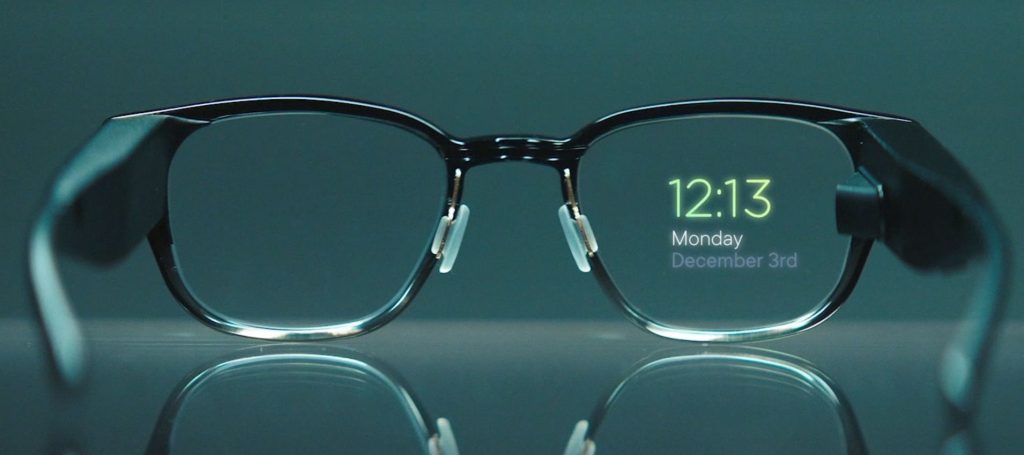Smart glasses have evolved from a futuristic concept to a tangible reality, revolutionizing the way we interact with technology and the world around us. With advancements in augmented reality (AR), virtual reality (VR), and wearable technology, smart glasses are poised to play a pivotal role in our daily lives. In this article, we will explore the current state of smart glasses, emerging trends, potential applications, and what we can expect in the future.
Understanding Smart Glasses
Smart glasses are eyewear that incorporates technology to enhance the user experience. They often feature integrated displays, cameras, sensors, and connectivity options, allowing users to access information, receive notifications, and engage with digital content seamlessly. Unlike traditional glasses, smart glasses aim to blend the physical and digital worlds, offering a hands-free way to interact with technology.
Current State of Smart Glasses
As of now, several companies have launched smart glasses that cater to various audiences. Notable examples include:
- Google Glass Enterprise Edition: Designed for professionals, this model focuses on workplace applications, providing hands-free access to information and tools.
- Microsoft HoloLens: A mixed-reality headset that overlays digital content onto the real world, primarily used in industries such as healthcare, manufacturing, and education.
- Snap Spectacles: Targeted at consumers, these glasses allow users to capture and share short video clips directly to social media platforms.
Despite their potential, smart glasses have faced challenges regarding user adoption, battery life, and societal acceptance. However, advancements in technology are paving the way for a brighter future.
Emerging Trends in Smart Glasses
1. Enhanced Augmented Reality Capabilities
The integration of augmented reality is one of the most significant trends in the development of smart glasses. Future devices are expected to offer improved AR experiences, allowing users to interact with digital content in real time. This could include navigation assistance, virtual overlays in retail settings, and interactive gaming experiences.
2. Improved Battery Life and Performance
Battery life has been a common concern with smart glasses, often limiting their usability. However, advancements in battery technology, such as energy-dense lithium-sulfur batteries, promise to extend usage time significantly. Additionally, more efficient processors will enhance performance without draining power, making smart glasses more practical for everyday use.
3. Seamless Connectivity
As the Internet of Things (IoT) continues to expand, smart glasses will likely offer seamless connectivity with other devices. This could include integration with smartphones, smart home systems, and wearable devices, creating a cohesive ecosystem that enhances user experiences. Expect to see features like voice commands and gesture controls becoming standard.
4. Fashion and Design Innovations
To appeal to a broader audience, future smart glasses will need to overcome the perception of being bulky or unattractive. Manufacturers are increasingly focusing on stylish designs that mimic traditional eyewear. Expect to see collaborations with fashion brands and the introduction of customizable frame options that cater to individual tastes.
5. Health and Fitness Applications
As health and wellness become priority areas for consumers, smart glasses are likely to incorporate health-monitoring features. This could include fitness tracking, heart rate monitoring, and even stress management tools, providing users with valuable insights into their well-being while they go about their daily activities.
Potential Applications of Smart Glasses
The versatility of smart glasses opens up numerous potential applications across various sectors:
1. Education and Training
Smart glasses can transform the education sector by providing immersive learning experiences. With AR capabilities, students can visualize complex concepts and interact with 3D models. Additionally, in vocational training, smart glasses can offer real-time guidance and feedback, enhancing skill acquisition.
2. Healthcare
In healthcare, smart glasses can assist medical professionals by displaying patient information, guiding surgical procedures with AR overlays, and facilitating remote consultations. This technology can enhance accuracy and efficiency, ultimately improving patient outcomes.
3. Retail and E-Commerce

Smart glasses can revolutionize the retail experience by offering virtual try-ons, personalized recommendations, and interactive product displays. Shoppers could visualize how products fit into their lives before making a purchase, bridging the gap between online and in-store shopping.
4. Navigation and Travel
For travelers, smart glasses could provide real-time navigation assistance, translating signs and menus, and highlighting points of interest. This hands-free approach to navigation can enhance the travel experience, making it more enjoyable and less stressful.
5. Social Interaction and Communication
As social media continues to evolve, smart glasses could enable new forms of communication. Features like live streaming, facial recognition, and augmented reality filters can enhance social interactions, allowing users to share their experiences in real time.
Challenges Facing Smart Glasses
1. Privacy Concerns
The integration of cameras and recording capabilities in smart glasses raises significant privacy concerns. Users and bystanders may feel uneasy about being recorded without consent. Manufacturers will need to establish clear guidelines and features that address these concerns, such as visual indicators when recording is in progress.
2. User Acceptance
For smart glasses to become mainstream, they must overcome societal biases and perceptions. Many people associate wearable technology with niche markets or geek culture. To foster acceptance, brands will need to emphasize the practical benefits and stylish designs that appeal to a broader demographic.
3. Technical Limitations
Despite advancements, technical limitations continue to hinder the adoption of smart glasses. Issues such as battery life, processing power, and display quality must be addressed to provide a seamless user experience. Continuous innovation is vital for overcoming these challenges.
What to Expect in the Future
1. Mainstream Adoption
As technology advances and the design of smart glasses becomes more appealing, we can expect to see mainstream adoption. Companies will likely focus on creating use cases that resonate with everyday consumers, highlighting the practicality and convenience of smart eyewear.

2. Expanding Ecosystems
The future of smart glasses will likely involve the creation of expansive ecosystems that integrate various technologies. This could include partnerships with app developers, content creators, and businesses to offer a range of applications tailored to user needs.
3. Enhanced Personalization
Future smart glasses may offer personalized experiences based on user preferences and behaviors. With the help of AI and machine learning, these devices could adapt to individual routines, providing tailored recommendations and notifications.
4. Continued Innovation
The ongoing advancements in display technology, battery life, and connectivity will drive the evolution of smart glasses. We can expect to see innovations such as holographic displays, improved voice recognition, and even AI-driven features that enhance usability.
Conclusion
The future of smart glasses is bright, with potential applications spanning numerous industries and everyday activities. As technology continues to evolve, we can expect enhancements in functionality, design, and user experience. While challenges remain, the ongoing innovation in this space promises to reshape how we interact with the world around us.
As smart glasses move towards mainstream adoption, they will redefine convenience, connectivity, and communication. Whether it’s enhancing our daily routines, transforming industries, or enriching our leisure experiences, the possibilities are endless. Embracing this technology could open doors to a new era of interaction and engagement, making smart glasses an essential part of our future.


